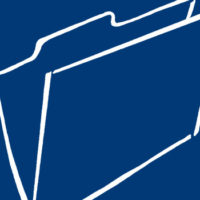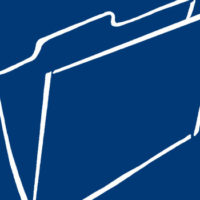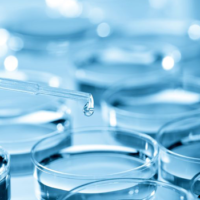Nothing we do in food safety quality control raises as many questions as microbial air sampling. While the science is fairly straightforward, somewhere along the line, our approach to sampling has become much like that of a backward soothsayer who divines the question after first being given the answer. For example, we often buy the microbial air sampler, and then try to fit it into our operation.
Sampling strategies differ depending on the specific situation and expected outcome. Every sample site and purpose requires a differing degree of sophistication and a different approach to data analysis. All microbial aerosol samplers must be judged in terms of their capability to collect microbes under different operating conditions while minimizing the environmental stress on the organisms collected.
Rarely is microbial air sampling conducted as a quality control point of a process or product. More often than not, air sampling is done to determine the cleanliness, or absence thereof, of the microbiological environment in which a product is manufactured. Microbial air sampling answers the question, “How clean is clean?”
Because of the different modes of collection used by the various microbiological air sampling devices, it is both difficult to compare and contrast their sampling efficiencies. For instance, low shear-force liquid impingers are ideal for the recovery of stressed organisms and therefore provide the best recovery of the widest range of airborne microorganisms. This makes it the best sampler for the initial determinination of the bioburden. Yet, using an impinger sampler is less portable, more time consuming and requires a greater degree of laboratory sophistication, and therefore is not the first choice for use in routine sampling. Sieve samplers provide particle size distribution of the bioaerosol, whereas slit-to-agar samplers are used to determine the airborne bioburden as a function of time and activity without regard to particle size. Settling plates are suitable to locate point sources of emissions, where larger particles are generated. They rely on gravity and particle dynamics to provide a gradient of contamination, whereas centrifugal samplers and certain sieve samplers provide an easy and rapid means to take numerous samples of the gross airborne bioburden where size and temporal considerations are unimportant.
Therefore, there is no single sampling method that is suitable to all situations. The following is a brief review of the types of microbial air samplers and their use.
Gravitational Samplers. Settling plates are the simplest forms of collection devices for monitoring airborne biological particles. A Petri dish containing an agar medium will collect particles that settle by gravity. Settling plates are passive, non-volumetric and imprecise by over-representing larger particles due to their rapid settling rate. Collection in turbulent air is seriously affected by shadowing or turbulent deposition. However, settling plates can be used as an adjunct to other sampling methods or as a pre-screening tool in areas suspected of containing a significant bioburden where deposition is most likely. For instance, placing settling plates around pieces of equipment or around specific processes may indicate the need for improved aseptic technique if viable droplets are deposited in decreasing concentric concentrations from the aerosol source. Settling plates can be useful to initially evaluate the airborne microbial release of cooling towers and condenser units.
Impingers. The AGI-30 (All Glass Impinger) was designated as the reference standard sampler. Confidence in the collection efficiency of this device is largely historical. For this reason, the all-glass impinger is the best unit to determine the initial bioburden of an area. Most impingers are designed to operate by drawing aerosols through an inlet tube. The air is passed through a jet into a liquid medium. The jet, which is positioned 30 mm above the bottom of the glass impinger, consists of a short capillary tube. When the pressure-drop across this capillary tube attains a minimum of half an atmosphere, the flow through it becomes sonic and may therefore be rate-limiting. The most efficient sampling rate for the AGI-30 to capture particles in the 0.8µm to 15.0 µm range is 12.5 L/min. Larger particles are collected on the sampler’s curved inlet and are recovered by pipetting a known volume of collecting fluid into the impinger inlet, which then flows slowly through the impinger jet into the collection medium.
The usual volume of collecting fluid is 20 mL, but depending on application may be reduced to as little as 2 mL to increase the concentration of collected microorganisms. The collecting fluid can be plated, filtered or diluted as necessary. Sampling time can be adjusted to prevent evaporation of the collecting fluid and cooling of the sample. The collection medium used with an impinging type sampler should prevent osmotic shock of vegetative organisms. Because deionized water may promote lyophilization, a dilute poly peptone-peptone broth or a physiological saline transport medium may result in greater recovery.
Impactors. Inertial forces are responsible for impaction action. The impactor is basically a jet, under which is an agar impaction surface. Particle-laden air sucked through the jet is directed at the collection agar surface so that particles impact onto it. In a cascade impactor, particles are captured by inertial force, with particles impacting in cascading order: Larger particles are captured first while those smaller remain airborne and follow the streamlines and each successive stage having increased air velocity through the corresponding jet. This device is the most commonly used in industrial hygiene and clean rooms.
• Stacked Sieve Samplers: The stacked sieve impactor sampler consists of a series of six stages each composed of a plate having 200 holes. Each plate is held above a Petri dish containing nutrient agar with successive plates having smaller holes. At constant flow (28.3 L/min), largest particles impact on the first stage whereas smallest ones impact on the last impaction stage. Unless sampling times are short or the relative humidity high, the areas of nutrient agar directly under each hole of a stage can rapidly dry. Fastidious microorganisms consequently may fail to grow on the upper stages due to the desiccation of the agar, but grow on the lower stages because the relative humidity of air increases as it passes through the sampler. Covering the agar with a water-evaporation retardant, or increasing the water content of the agar can reduce this problem. The precision with which airborne microbes are captured depends on the collection surface. The agar containing Petri dishes need to be level and filled precisely with the recommended amount of agar to give the correct plate to agar surface distance. Using plastic Petri dishes may give rise to an electrostatic effect but it can be argued that the small problems of wall losses can be offset by the practicalities of use. The major advantage of multiple stage cascade impactor is that it provides particle size data.
There is a two-stage version of the impact sampler. It separates viable particles into “respirable” and “non-respirable” fractions. The upper stage corresponds roughly to deposition on stages 1 and 2 of the six-stage version and the lower stage, to deposition on stages 3 to 6. However, side-by-side comparisons with the six stage version revealed an approximately 40% lower recovery rate of bacteria with the two-stage sampling device, except when sampling dilute concentrations of particles larger than 1 µm. By using a correction factor provided by the manufacturer when calculating the colony count, the difference in collection efficiencies is minimized.
There are several variants of the sieve sampler, including one-stage devices. While these units will not provide particle size distribution, they are efficient collectors across the entire size spectrum. These units have the advantage of being rapid and consistent but should only be used as a validation tool once the scope of the bioburden is known.
One notable sieve-type sampler that has found its way into routine quality control sampling is the surface-to-agar sampler (SAS). This instrument was developed as a self-contained, portable, easy to use instrument and utilizes standard 100 mm media Petri or contact plates that are routinely used in surface sampling. Its sampling rate approximates isokinetic conditions and the collection efficiency in several particle size ranges has been greatly improved.
• Slit-to-Agar Samplers. In slit-to-agar samplers, air is drawn through a narrow slit where it is accelerated and directed toward the surface of a Petri dish containing agar media. The collection surface is placed on a rotating turntable. Airborne microorganisms impact onto the agar surface and are separated spatially by the plate’s rotation, thereby, providing a stochastic analysis of bioaerosols as a function of activity. The sampler is operated at a fixed sampling rate of 50 L/min; rotational speeds can be varied and the collection efficiency is for particles 0.5 µm and higher. This sampler is best used to monitor the effect of material movement or operational variations of support and production equipment. In short, it is best used as a tool to measure “people activity.”
Centrifugal Samplers. The principle of collection of centrifugal samplers is centrifugation, which involves the creation of a vortex in which particles with sufficient inertia leave the air stream to be impacted upon a collection surface like a semi-solid medium. The most frequent example of this type is the Reuter centrifugal air sampler. Air is drawn into the sampler by an impeller housed inside an open shallow drum. The air is then accelerated by centrifugal force toward the inner wall of the drum. Lining the inner wall is a plastic strip supporting a thin layer or agar medium, onto which airborne particles are impacted. These strips are subsequently removed and incubated. The motor for the impeller is battery operated and the whole sampler unit is small enough to be hand-held.
There has been some concern expressed about its effective flow rate and collection efficiency. Air enters and leaves the sampler through a single opening; therefore flow rate quantification is theoretical. However, if the sampling protocol is properly defined, it can be used as its own control and the need for volumetric sampling becomes moot. Newer variants have overcome this objection. A newer design of the Reuter sampler allows separate entry and exit airflow that improves its performance by providing an actual flow rate and therefore, can more closely approximate isokinetic sampling conditions. The sampling rate is calculated from the impeller revolution of 4092 rpm; which yields an effective sampling rate of 40 L/min. However, studies have shown that the effective sampling rate may be nearer to 100 L/min under certain conditions. While these devices collect larger particles (15 µm) quite efficiently, less than 10% of particles under 2 µm in diameter are deposited; therefore, comparisons to the impactor, slit-to-agar and impinger type samplers cannot be made.
If different groups of organisms are to be sampled that necessitates the inoculation of different media, repeat samples must be taken at each sample point. This increases the sampling time and may result in errors if rapid and large variations occur in the air. The SAS and Reuter samplers have the distinct advantage of ease of use and therefore rapid comparisons of qualitative microorganism profiles can be made. This makes the SAS and Reuter samplers the most versatile instruments as prescreening and quality control tools.
Surface Sampling
There are certain topics and technologies relating to our profession that everyone seems to inherently know everything about. Surface sampling is one of them. Without being too harsh, when faced with the task of performing a microbiological surface survey, and given the choice between the right and wrong way of doing things, we humans somehow gravitate toward the latter. Microbiological surface sampling has taken on a new importance in forensics and quality control. Trying to comply with the zero Listeria tolerance had us scrambling for an easy method with good repeatability. So, with commercial kits newly designed for the task, we take our samples and rely on our lab tech to sort things out ... hoping for the best.
Sampling Rationale. To help put a rational spin on this topic, let us first say that surface sampling for microbial contaminants is as diverse as air sampling. The method and equipment we choose should be predicated on the specific situation under evaluation. For instance, the methodology should take into account the types of microbial contaminants expected, predicted conditions of survival and dormancy and their estimated concentration. The principal factors that influence the selection of the sampling tool, is primarily the geometry (curved, flat, grainy, smooth, etc.) and chemical condition (disinfectant residues, oils, salts, etc.) of the surface to be sampled. Additionally, somewhere in this process, we need to provide guidance to the laboratory so that the technician may select an analytical method that complements the objectives of the sampling test.
Sampling Methodology. Surface sampling for enumerating viable microorganisms consists of four basic methods: contact-plates and swabs and wipes are the most frequently used. The other two methods, direct surface agar plating and rinsing and vacuum collection have limited application except where the geometry of the surface precludes use of the other methodologies or whole surface testing is necessary. These are more labor- and lab-intensive, and thus are not routinely used in quality control and regulatory applications.
Contact Sampling. Contact sampling works best on smooth flat surfaces, even those with slight curvature. Contact plate or slide sampling involves pressing a solidified nutrient agar surface against the sample surface. The media-containing samplers are then incubated and a direct microbial count taken. These surface samplers are designed so that the meniscus of the agar is raised slightly above the container, enabling ease of contact with the surface. Gener-ally, five seconds of contact is sufficient for optimal microorganism recovery.
Since microorganisms are unevenly distributed on surfaces, a specific sampling area should be delineated. A common size is a 10-inch by 10-inch, or 100-square-inch area in which five plates or slides are randomly arranged. In the absence of any formal sampling scheme, this is usually sufficient for a relatively accurate picture of the bioburden. If high contamination or confluent growth does not prevent accurate counts, the total number of microorganisms is estimated as follows:
Total microorganisms /100 in.2 =
Total microorganisms /5 plates x 100 in.2 3.9 in.2 x 5
For curved or uneven surfaces, contact slides consisting of a flexible culture-medium-coated film board may be used. They are commercially available with several different media and have a larger surface area than the conventional contact plates. Another variant of the contact method is using sterile velvet pads or membrane filters to make an imprint on a surface and then imprinted onto agar. Another variant is a Cellophane tape imprint. These are ideally suited to collect spores and larger non-viable biological contaminants. After the tape is pressed against the surface, the exposed area can be placed in a Petri dish and covered with a suitable agar for culturing, or the exposed side of the tape is stained, inverted on a slide and observed microscopically.
Swabs and Wipes. Swabbing with a sterile cotton-tipped applicator or sponge is most useful for sampling small inaccessible areas to estimate gross contamination. Two similar swab techniques are generally used. The first consists of a cotton-tipped wooden applicator or sterile gauze pad (which can be wrapped around the end of a sterile tongue depressor) that is used to wipe a surface of a given dimension. The swab is then either wiped directly across an agar surface or immersed in a solution to remove the collected microorganisms. Aliquots from the solution are plated with an appropriate culture medium. The second technique uses calcium alginate swabs. After wiping the surface, the swab is dissolved in Ringer’s solution containing sodium hexametaphosphate to free the microorganisms collected in the strands. Although the alginate and eluents used in the dissolving medium may inhibit growth of some organisms, these swabs have been shown to have a higher recovery rate than regular cotton-tipped swabs. Another advantage to this method is the ability to capture the organisms suspended in the eluate on a membrane filter, which then can be placed on a nutrient broth-impregnated pad or agar plate for incubation.
To use this sampling technique, aseptically remove a sterile swab from its wrapper and insert it into a vial containing 4.5 mL of a buffered solution. The swab is moistened and excess liquid is deposited against the inside of the vial. The swab is then moved across the testing surface, reversing direction between successive strokes while rotating the swab between the fingers. To quantify the microbes in the area sampled, a sterile paper template with an opening up to 1-square-foot can be used. Recovery may be enhanced by adding 0.01% Tween (a surfactant) to the eluent.
Wipe techniques are also quite handy, particularly in food processing where a larger sampling area is required. Sampling packs containing a pair of sterile gloves, a desiccated sponge and a neutralizing broth are available.
Lessons Learned
Given the imprecise nature of this science, there is no universal methodology that will recover all the organisms from a surface being sampled. However, by using a combination of techniques, a reasonably accurate picture of the bioburden under similar environmental conditions can be made. As with any environmental sampling, efficiency of recovery depends on understanding bacterial adhesion, survival, dormancy and the recovery of stressed organisms.
Forensic sanitarian Robert W. Powitz, Ph.D., MPH, RS, CFSP, is principal consultant and technical director of Old Saybrook, CT-based R.W. Powitz & Associates, a professional corporation of forensic sanitarians, specializing in environmental and public health litigation support services to law firms, insurance companies and industry. Contact him at sanitarian@juno.com.
Successful Sampling Program, Part III: Environmental Air and Surface Techniques




